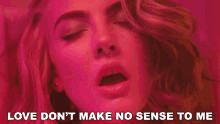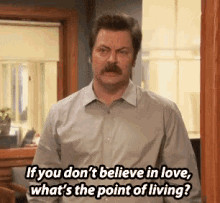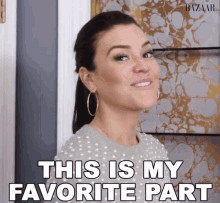“Instructions For Dancing” by [Author’s Name – please insert if you know it] has garnered considerable attention, and while it possesses some redeeming qualities, a significant flaw overshadows its merits, substantially impacting my overall reading experience. This review delves into the core issue that prevented this book from truly resonating, despite its initial promise.
The narrative centers on Yvette, who, disillusioned with love, decides to donate her collection of contemporary romance novels. Ironically, the story culminates in Yvette falling deeply in love, a transformation that feels abrupt and unconvincing.
 Yvette's initial and final states of belief in love
Yvette's initial and final states of belief in love
 Yvette's transformation within the story
Yvette's transformation within the story
 Timeline of Yvette's emotional shift
Timeline of Yvette's emotional shift
Similar to many stories with comparable setups, “Instructions for Dancing” succumbs to the trope of unbelievable, almost instantaneous love. The protagonist’s attempts to deny her burgeoning feelings, rooted in a past traumatic event, could have been acceptable if the characters themselves were engaging. Unfortunately, they lacked depth and personality, particularly beyond the 60-70% mark of the book, where their one-dimensional nature became glaringly apparent. Each character can be summarized in a single, reductive sentence:
- Yvette: A non-believer in love, at least initially.
- X: The conventionally attractive and supposedly exciting love interest, though lacking in genuine appeal.
- Martin: The stereotypical nerd, characterized primarily by his infatuation with Danica.
- Danica: Yvette’s sister, presented as less conventionally attractive yet possessing a supposedly alluring aura.
- Sophie: The archetypal gentle and timid friend, with minimal character development.
- The other friend: An unnamed, rude, and unlikeable friend, easily forgettable.
- Yvette’s father: A central figure in the book’s major problematic element.
- Yvette’s mother: A perfunctory maternal figure, serving a functional role rather than possessing individual depth.
- Shirley and co.: Key players in the book’s most significant issue, contributing to its downfall.
 Spoiler warning for Instructions for Dancing review
Spoiler warning for Instructions for Dancing review
The Core Issue: Endorsement of Cheating
Now, let’s address the most critical flaw: the book’s handling of cheating and its unsettlingly positive portrayal. Yvette’s father’s infidelity with Shirley is a central plot point. The narrative progresses to the point where Yvette is expected to attend her father’s wedding to Shirley, the woman with whom he cheated. While Yvette grapples with this, the real issue surfaces during the bridal shower scene.
Disturbingly, everyone celebrates Shirley’s relationship with Yvette’s father, framing it as a romantic triumph of finding her “knight in shining armor” in a married man. This family dynamic is presented as acceptable, even heartwarming, which is deeply problematic. The narrative essentially normalizes and even glorifies infidelity. Had there been any acknowledgment of the moral ambiguity or negative consequences of Shirley’s actions, the situation might have been somewhat salvaged. However, the story doubles down on this problematic stance.
The pinnacle of this issue is Shirley’s mother’s speech, which includes the following excerpt:
“When Shirley first told me she met a man…let’s just say I was skeptical.”
“But I said to Shirley that I would keep my mind open when I met him. And when I did meet him, I told him I was going to be hard to please. But, miracle of miracles, he pleased me. First of all, he’s a good man. A family man. I’m so glad to have two new grandchildren to fuss over.”
This statement is jarring. A “good man” and a “family man” are hardly descriptors for someone who engages in infidelity and betrays his family’s trust.
“And you should see the way he looks at my Shirley, like she put the sun and the moon and all the stars in the sky. It’s almost embarrassing the way he loves her. But a love like that is what she deserves.”
This romanticization of a relationship built on betrayal is deeply unsettling. The speech continues:
“Sweetheart, you are the love of my life. I’m so glad you found the love of yours.”
This sentiment, in context, reads as a tacit approval of Shirley’s role in breaking up a family. Yvette’s internal monologue further compounds the issue:
“I’ve called her a liar and a cheat. I blamed her for taking Dad away from us. And for making things awful between Mom and me and Danica and me. I’ve been angry. So angry. But looking at her now, I see how much she loves Dad. Of all the things I expected to feel today, understanding for Shirley wasn’t one of them. It’s hard to completely hate. someone who loves someone you love. She loves Dad. I can’t deny that.”
This forced empathy and understanding for Shirley, presented without critical examination of her actions, feels like an attempt to justify and excuse infidelity. The narrative seems to push for acceptance of cheating rather than acknowledging its destructive nature.
Final Verdict
“Instructions for Dancing” falters significantly due to its problematic portrayal of cheating. The book’s attempt to normalize and even celebrate infidelity is a major misstep. If you are sensitive to themes of cheating or prefer narratives that condemn infidelity, this book is best avoided. Read at your own discretion, but be warned that “Instructions for Dancing” may leave a sour taste due to its questionable moral compass.
